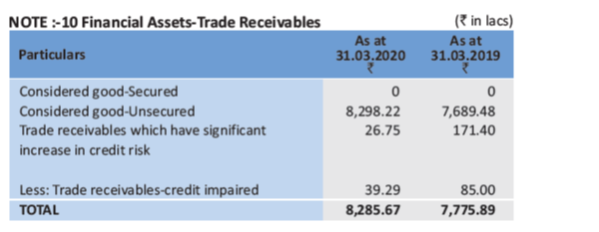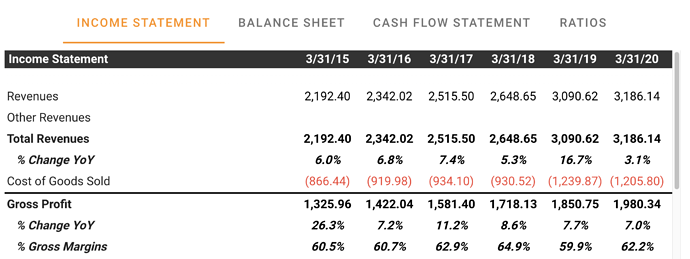Industry tailwinds and Competitor Analysis
In my view, one of the most important part of any investment thesis are industry tailwinds. This is important because individually a company might be brilliant but if the entire industry is facing headwinds, then company can at best hope to maintain sales.
Pix derives 48% of its revenue from exports. These are higher margin than the domestic business. Pix’s largest global competitor (as far as I know) is Gates Industrial Corporation plc. (NYSE:GTES). In this post I analyze gates as a proxy for analyzing the industry as a whole. As per one of Rajeev sir’s post, Gates commands 40% market share in NA market. Thus it is reasonable (though not 100% accurate) to take gates as a proxy for the industry. This analysis also serves as a competitor analysis since gates and Pix are direct competitors at least in the NA market.
Company description
Gates is into two main lines of business: Power transmission and Fluid power. The Power transmission sub-business is the one which competes with Pix and this all analysis focuses on that part (unless not possible).
Q1CY21 performance
Gates’ Power transmission business did 559M$ in Q1CY21. This is an increase of 27% YoY. Gates’ adjusted EBITDA margin was 23.7%, +5.7% YoY. Margin expansion was driven by volume growth (operating leverage). Gates is a global company. Gets 46% of revenue from NA, 12% from Greater China, 25% from EMEA, 12% from EA&I (East asian and India) and 4% from South America. They showed decent core revenue growth in all geographies. 12% in NA, 18% in EMEA, 42% in South America, 24% in EA&I, 72% in Greater China. ROIC of 17%. Company has guided for 18-21% Core revenue growth in CY21. This is an upgraded guidance over previous guidance of 9-14% growth. Guidance of 22-23% for adjusted EBITDA margins. Company is doing 90M$-110M$ capex.
Q1CY21 concall notes
- Economic momentum is building across most of our end markets, resulting in solid performance for the quarter that significantly exceeded our original guidance and the updated expectations we provided at the beginning of April.
- Margin expansion was driven by gross margin improvement, increased volume, our restructuring actions & strong operational execution.
- Growth in Power Transmission was led by the industrial end markets, primarily diversified industrial, personal mobility and on- and off-highway applications. Sales across replacement channels showed strong growth but were outpaced by those into first-fit channels. (Sahil’s notes: Pix is primarily into replacement market only).
- In Power Transmission, our industrial chain-to-belt revenue grew approximately 50% YoY. (Sahil’s notes: Pix gets a large % of revenue from industrial belts).
- We believe that inflationary pressures, while significant for the remainder of the year, are manageable, and we remain confident that price will offset inflation for the full year.
- Saw very positive demand trends throughout Q1 as I’ve outlined. What we have seen in April, particularly in order rates, certainly reflects the continuation of the same trend. It’s been quite broad across, frankly, all of the regions.
- We will be dealing with some incremental headwinds, particularly associated with labor availability in the United States and the decelerating auto OEM demand as our customers are facing more challenging supply chain issues on their end and I think that the well-reported issues in India associated with COVID. (Sahil’s Notes: Neither of these headwinds applies to pix).
Pix Size of opportunity Estimation
Gates did 3B$ of sales in 2020. 64% were in power transmission division. 64% of those were for replacement market. 48% of sales came from NA. This puts Gates’ North america power transmission replacement channel sales at 600M$. As per Rajeev sir’s shared report, Gates has a 40% market share in NA. This puts the NA Power transmission replacement market size at 1.5B$. Since we do not know Gates’ global market share, we cannot estimate the global market size. However, if we just extrapolate the 40% market share which they have in NA to the world, we would estimate the global market size (for pix’s addressable market) to be 3B$. According to these calculations pix has a roughly 1.5% global market share. This shows us the size of opportunity for pix to grow their exports and capture global market share.
Gates and Pix Peer Comparison on Numbers
| Attribute / Company |
Gates |
Pix |
| TTM Sales |
21600 |
355 |
| Gross Margin |
38% |
63% |
| Operating Margins |
11.60% |
20% |
| Net Margins |
3.80% |
14.50% |
| Asset Turnover |
0.4 |
0.8 |
| Total Debt / Equity |
86% |
29% |
| Last 5 years Sales growth |
1.50% |
8.50% |
| P/E ratio |
46 |
12 |
| EV/EBITDA |
14.1 |
7.4 |
For the sake of consistency, all numbers have been taken from the tikr.com pages.
Conclusion
Pix’s largest competitor is growing well. This shows global strength in demand for V-belts. The concall commentary is also very positive for 2021 outlook. They are able to pass on inflation by adjusting prices. Pix is very small compared to global opportunity size. Pix has better margin profile and asset turns and yet is undervalued compared to its global peer, possibly due to it being a smallcap which is largely undiscovered by institutional owners. There is some possibility for rerating.
Disc: Have a small position, planning to invest more next week.
Sources:
- Gates Q1CY21 investor presentation
- Gates Q1CY21 concall
- Gates FY20 AR
- pix on tikr.com
- Gates on tikr.com






